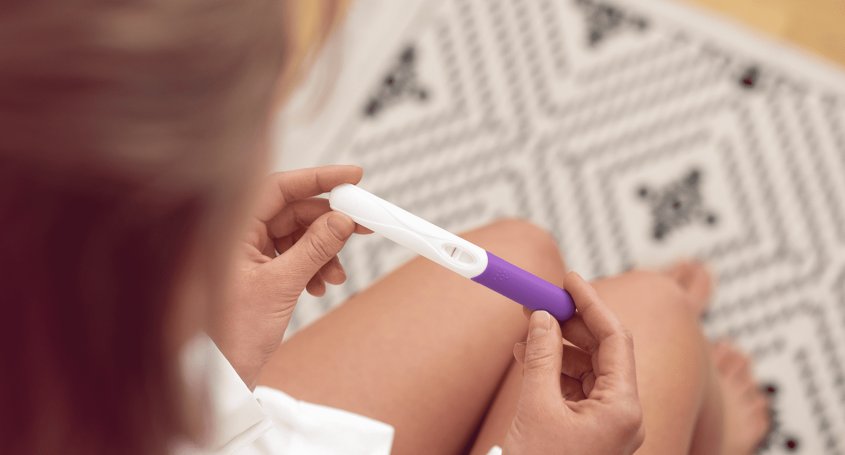For a pregnancy to start off on the right foot, the woman's body has to allow the embryo to implant correctly. This process is complex and this is where Killer Immunoglobulin-like Receptor (KIR) and their interaction with certain antigens present in the embryos play an important role. In this given situation, we have three actors that interact with one another:
- On the one hand, we have KIR receptors, which are located on the surface of uterine Natural Killer (NK) lymphocytes. KIR receptors can be of two types: A or inhibitory and B or activating.
- On the other hand, we have the so-called histocompatibility antigens type C (HLA-C), which in turn, can also be of two types, HLA-C1 and HLA-C2. These antigens are inherited by the embryo from the genetic parents, and as a result can have three types of combinations in the embryo: HLA-C1C1, HLA-C2C2 and HLA-C1C2.
- The last factor involved in this equation is the mother's own HLA-Cs, which have the same combinations that are present in the embryos. Theoretically, the mother's body could have a worse response when the embryos carry other people's HLA-Cs (either from the father or from an egg donor) than if the embryo inherits the mother's own HLA-Cs.
And how do these interactions occur? studies confirm that there are certain combinations between embryonic and maternal KIR receptors and HLA-C that can lead to an increased risk of placental pathology during pregnancy, and hence it was suggested that the risk of developing these pathologies (intrauterine growth retardation, preeclampsia...) should be determined at the time the embryo is implanted. It was also postulated that these alterations could also compromise the pregnancy by increasing the risk of miscarriage due to poor implantation, which is why studies began to be conducted in the field of fertility.
Although it was presumed that the combination of women with KIR type A receptors and embryos carrying HLA-C type 2 could cause a higher risk of miscarriage, the reality is that published studies have not demonstrated significant clinical utility beyond certain unusual scenarios. Moreover, to date there is no pharmacological treatment that has shown evidence of improved outcomes, so, as we will discuss further below, the strategy is based on avoiding these special circumstances.
And what are these special situations in which KIR receptors can cause trouble? Studies have shown that when the woman undergoing an embryo transfer is haplotype A (inhibitor) and the embryos express a high number of HLA-C2, there may be a higher risk of miscarriage, especially when the amount of embryonic HLA-C2 is higher than that of the mother and when these HLA-C2 are not from the same mother (they can be from the father or from an egg donor, bearing in mind that HLA-C2 are inherited by the embryo from the genetic progenitors). But most importantly is that the risk of miscarriage has only been confirmed when more than one embryo was transferred. Therefore, currently, in a clinic that performs almost all transfers with single embryos, these problems are not clinically relevant when it comes to establishing possible causes of repeated miscarriages.
Therefore, if the patient in question is haplotype B (activator) or carries KIR HLA-receptors there would be no increased risk of miscarriage because the risk would only exist if the woman is haplotype A (inhibitor) or if embryos express a higher number of HLA-C2 than the woman undergoing the transfer (and an embryo cannot express a higher number of HLA-C2 than the woman, if the woman is already HLA-C2C2).
In cases in which the woman has KIR type A receptors (inhibitor), the strategy is to prevent the number of HLA-C2 in embryos from being greater than that of the mother. But, above all, it involves not transferring more than one embryo (especially in egg donation ) because it is then that embryonic HLA-C2 levels can clearly exceed the amount of maternal levels of HLA-C2. In addition, in egg donations, all HLA-C2 come from an external source, which can lead to even greater rejection. Another possible strategy would be to look for HLA-C1C1 donors to reduce embryonic HLA-C2 levels, but this is much more complex (it is estimated that only 30% of Caucasian donors will be HLA-C1C1) and does not provide any additional benefits compared to the suggested single embryo transfer.
To conclude, if only one embryo transfer has been performed, regardless of whether it stemmed from the recipient's own egg or from an egg donation, there is no indication to order these tests because, regardless of the type of KIR recipient or HLA-C antigens involved, they will not allow us to explain negative results.


















